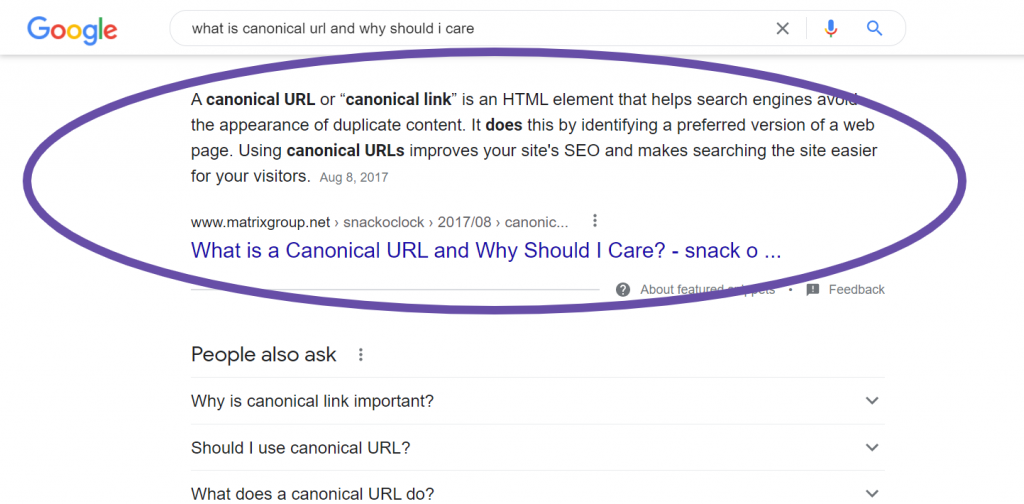
When writing any online content, whether it’s for your blog, about us page, store or resources, you must always consider the Google gods, and craft your content accordingly. While “writing for Google” can sometimes feel inauthentic, like you’re trying to game the system, it’s important to remember that what is good for Google and SEO, is also good and beneficial for your target audiences. It’s actually a win-win!
Two very important factors to consider for search engine optimization (SEO) when crafting your content are natural language queries and featured snippets.
What are natural language queries?
Natural language queries are web searches reflecting your normal spoken language like you might express if you were asking the question verbally of another person. As voice recognition features become more and more commonplace, this method of searching behavior becomes more relevant and deserving of attention.
What are featured snippets?
Featured snippets are special call-outs shown in Google results above the link to the result from which the snippet came. They are selected by Google systems that determine whether content on a page would make a good featured snippet for a user’s search request. Google results with featured snippets extend the authority of the page for the given search.
Here’s an example: a few years ago, I blogged about canonical URLs. Go ahead and perform a search in Google for this exact string:
what is canonical url and why should i care
You don’t need to enclose the string in quotes, just paste it into your browser and search. Notice the very first result for this particular query is my blog post titled with the same text. This demonstrates the power of natural language queries; by making the page title reflect the way a user might ask a question, Google has given it priority. Despite the millions of web results describing canonical URLs generally, this one rises to the top for the given search string.
But notice something else: Google also provides a featured snippet where, from within the page, it found a paragraph sufficiently, and briefly, offering an answer to the natural language question. The page didn’t include anything special around that paragraph and, in fact, you cannot “tell” Google what to use as a featured snippet, this decision is made by their algorithms. But the page was written to be informative and address a specific question.
So what does this mean for me?
First, consider pages of your site that answer questions about your mission or purpose. For example, you might have a page that describes “Our Mission” or “About Us” and consider the natural language query users would ask to find that page. It is unlikely that a Google search for “Our Mission” will find your page but a query like “what does {your organization acronym} do?” will. Consider giving pages like this a title that better reflects a natural language query.
Second, consider the other calls-to-action placed on the pages above. If someone finds your mission page directly from a Google search, what else do you want them to see, learn, or do? What authoritative message do you want them to hear regarding your position within your industry? Once you start getting natural language queries to land on these pages, they become more important as entry points to your website that inform and engage your audience.
Lastly, consider the content on pages like this and make sure they have a concise description or answer to the natural language query you’ve designed for them. This will encourage Google to use that content as a featured snippet. You don’t want the user’s journey to end by reading the Google snippet and going no further, so make it engaging as well as informative.
Hopefully this helps you with these concepts and enhances your content strategies!


